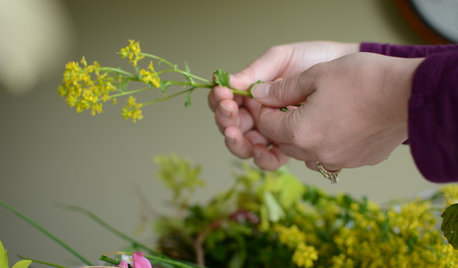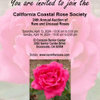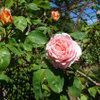So often when we want to identify a certain rose we have to know the names of the various parts of rose plant, in order to identify the different characteristics of different classes of roses. If you were or are anything like me you have forgotten all about the botany lessons in school..... . Also I would like to crate a stub on Wikipedia to describe the anatomy of a rose plant and take pictures of the different parts of different classes of roses. It would be a helpful tool for rose growers to identify different classes of roses ...gallicas, damasks, Albas etc. But here are the basic anatomy of a rose plant, so we all know what we are talking about when showing pictures of various parts of a rose plant. It maybe so basic that some of you roll your eyes, but many do not know the names of the the different parts of a rose plant:
As you can see the rose flower sits on a stem (peduncle) and consists of sepals, petals, stamens (anther + filament), and pistils (stigma + style + ovary). If the stigmas become pollinated with pollen from the anthers, it will become a Hip (the fruit of a rose) which contains the seeds.
The cane of a rose plant has thorns and leaves and budeyes. A leaf consist of (stipule, petiole, and leaflets). A budeye lies near every point where a leaf is attached to a cane just above the stipule or can be found anywhere on the cane as sleeping budeyes.
Basically rose plants can be grown from seeds, cuttings or budded on a rootstock. Roses grown from seeds or cuttings will be own-root rose plants. A rose cultivar budded on a rootstock are sold as bare root roses.
A bare root rose plant consist of canes, a bud union, a shank, anchor roots and feeder roots see link below:
Since English is not my first language and somewhat limited
I might have left out some important details ... please add these, so we all can learn more about the anatomy of a rose plant. I hope some will find this little lesson helpful.
Here is a link that might be useful: Bare root rose












aliska12000
williamcartwright
Related Professionals
Towson Landscape Architects & Landscape Designers · Stamford Landscape Contractors · Coeur d'Alene Landscape Contractors · Crystal Landscape Contractors · East Lake-Orient Park Landscape Contractors · Methuen Landscape Contractors · Roseville Landscape Contractors · Golden Valley Landscape Contractors · Brenham Swimming Pool Builders · Grandview Swimming Pool Builders · Thousand Oaks Swimming Pool Builders · Winchester Siding & Exteriors · Dale City Siding & Exteriors · Oak Forest Siding & Exteriors · Wilmington Siding & Exteriors